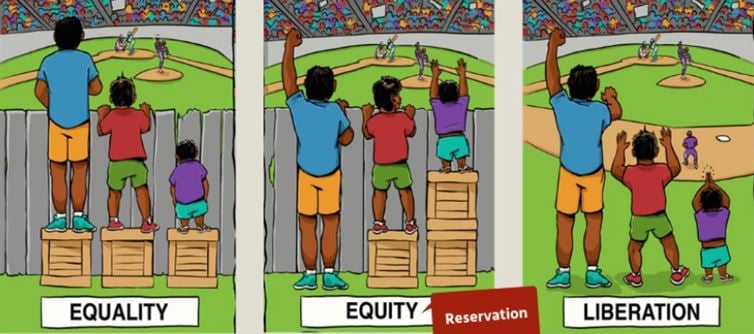
In India, merit is no longer rewarded — it’s punished. While politicians continue to buy votes with freebies and quota politics, the General Category (GC) student silently pays the heaviest price. Their families' empty savings, take loans, and bleed financially, just to afford an education that should have been fairly accessible on the basis of talent. Here’s the bitter truth:
1. IITs – ₹8 to 10 Lakh
For a B.Tech at the indian Institutes of technology, a GC student pays around ₹8–10 lakh over four years. Reserved category students, meanwhile, enjoy significant waivers and scholarships. The very institutions meant to produce India’s best minds start by penalizing the meritorious.
2. NITs – ₹5 to 6.5 Lakh
National Institutes of technology demand around ₹5–6.5 lakh for a B.Tech. Once again, GC students shoulder the full load, while others walk through with discounts and stipends. Same exam. Same effort. Different price tag.
3. IISc – Reality Check
The indian Institute of Science charges roughly ₹80,000–1.2 lakh for its B.Sc. program — not the inflated ₹8 lakh figure often floated. But here too, waivers heavily favor non-GC students. Even the country’s most prestigious research hub isn’t free of caste-based economics.
4. IIMs – ₹20 to 34 Lakh
The indian Institutes of Management are brutal on GC pockets. An MBA costs anywhere from ₹20–34 lakh, depending on the institute. GC students borrow lakhs in loans, while reserved category peers often walk away with subsidies. Is this education, or exploitation?
5. JNU – ₹5.5K vs ₹12 Lakh
At jawaharlal nehru university, master’s programs can be as low as ₹5,500 per year for subsidized categories, while GC students in certain professional or self-financed courses end up paying upwards of ₹5–12 lakh. The gap is staggering. Same classroom. Same professors. Unequal treatment.
6. NSUT (Netaji Subhas university of Technology) – ₹8 to 10 Lakh
For a B.Tech, GC students cough up ₹8–10 lakh. No relief, no cushion, no soft landing. parents mortgage homes while their children compete in the so-called “level playing field.”
7. The Stark Reality
Merit is not subsidized.
Merit is penalized.
Merit pays full price while mediocrity gets discounts.
This is not empowerment. This is injustice wrapped in the garb of “social justice.”
⚡ Bottom Line:
Every rupee squeezed from GC families isn’t just unfair — it’s a systemic betrayal. Instead of building an equal, competitive India, our system makes the meritorious finance the failures of politics.
🔥 Savage Closer: “In India, caste decides the bill, not talent — and merit always foots the highest tab.”




 click and follow Indiaherald WhatsApp channel
click and follow Indiaherald WhatsApp channel